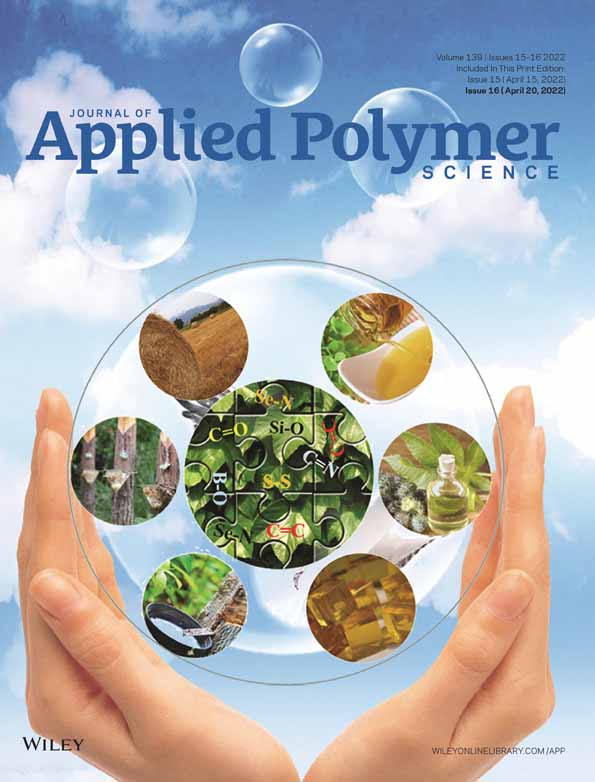Synthesis and characterization of high fluorine-containing polyimides with low-dielectric constant
Funding information: National Natural Science Foundation of China, Grant/Award Number: 51873038
Abstract
Aromatic polyimides (PI) with low-dielectric constant are becoming more and more important with the continuous development of high-speed communication technology. Herein, high fluorine-containing PI with low-dielectric constant was prepared. First, a novel aromatic diamine monomer 4,4′-(3,3′-bis[trifluoromethyl]biphenyl-4,4′-diyl)bis(oxy)bis(3-[trifluoromethyl]aniline) bearing multi-trifluoromethyl groups (12FDA) was synthesized and characterized. Subsequently, a series of PI with high-fluorine content (HFPI) were obtained by two-step polymerization of 12FDA with three commercial dianhydrides. The polymer films cured at a maximum temperature of 310°C showed excellent thermal and mechanical properties with high-glass transition temperatures (>250°C) and high-storage modulus (> = 2.0 GPa). The 5% weight loss temperatures of HFPIs were all above 500°C, which indicated that HFPIs exhibited excellent thermostability. Meanwhile, HFPI exhibited low-water absorption (<0.3%) and low-dielectric constant (2.40–2.68 at 1 MHz). The excellent thermal, mechanical, and electrical properties make it a promising dielectric material in electronics and communication industry.
Open Research
DATA AVAILABILITY STATEMNENT
Data sharing is not applicable to this article as no new data were created or analyzed in this study.




